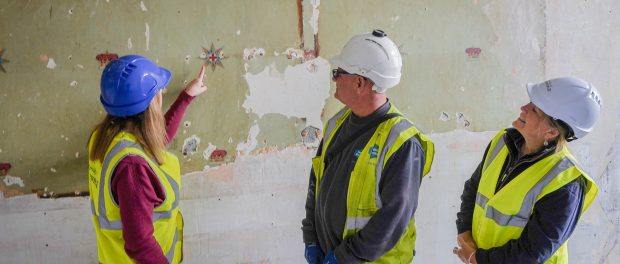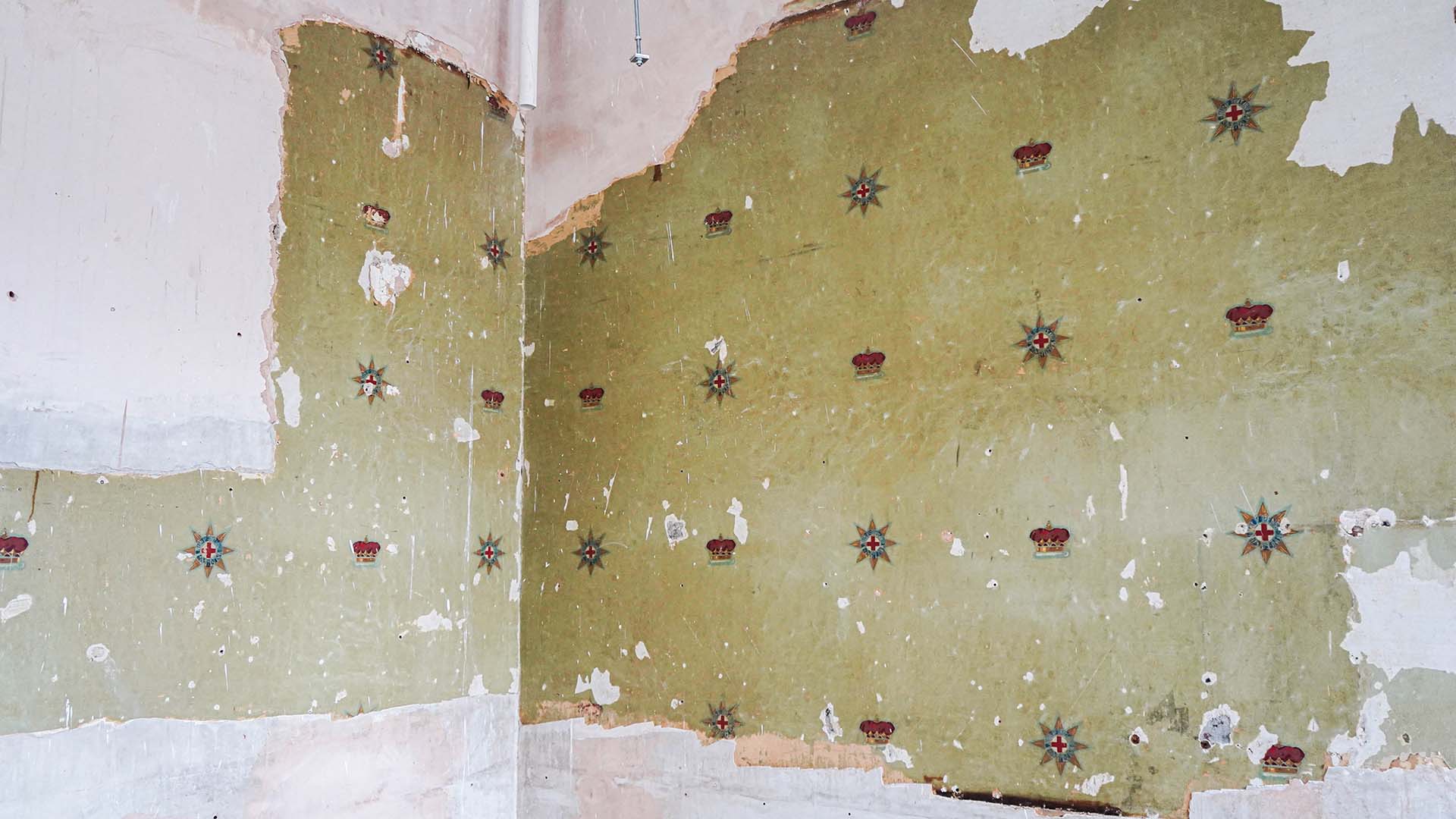Henry Boot Construction uncovers hidden 19th-century wallpaper during £10m Ramsden Building restoration

Henry Boot Construction has discovered a remarkable piece of history while leading– revealing hand-painted Victorian wallpaper hidden for almost 150 years.
The contractor, which is delivering the £10 million refurbishment, made the discovery while stripping back layers of paint and plaster. The site team uncovered colourful hand-painted wallpaper in the corner of a small office, featuring a crown and the Order of the Garter emblem that had been concealed since the 1880s.
Experts from the University’s Heritage Quay archive service helped identify the wallpaper’s significance.
Dr Becky Bowd, University Archivist, said:
“The building opened in 1883 with a Fine Art and Industrial Exhibition, showcasing Huddersfield’s technical and creative capabilities to paying audiences. We know the room was decorated by a local firm from the Exhibition guide but the distinctive repeating pattern of a crown and emblem were not mentioned.
“A deep dive in the archives uncovered a newspaper article which mentioned that the room was set aside for the VIP who opened the building: the Duke of Somerset. We think that the wallpaper was created just for him, and then covered up soon afterwards when it became a classroom.
“The emblem is the garter star from the Order of the Garter, and says ‘Honi soit qui mal i pense’. The Duke had been appointed a Knight of the Garter in 1862, so very few people could use that emblem and the room was also set aside for his use if he ever needed it.
“It’s likely that the team from Henry Boot Construction were the first people to see it for over a century.”
The Ramsden Building, a key part of Huddersfield’s architectural heritage, is being sympathetically refurbished to modern standards. Works include a full mechanical and electrical upgrade, installation of air-source heat pumps, and sensitive restoration of original features such as staircases, cornicing, and panelling. The project also involves removing a later mezzanine to restore a double-height event space.
Lee Powell, Managing Director at Henry Boot Construction, said:
“We’re proud to be leading the careful restoration of the Ramsden Building. Heritage projects like this are a real privilege, offering the chance to honour a building’s past.
“For our team, it has been especially exciting to uncover hidden treasures that reveal the building’s rich history. Our focus is on breathing new life into the space to make it future-ready, while preserving and celebrating the original features, character, and identity that make it truly special. We are doing this whilst keeping a keen focus on the commercial aspects of the project to ensure we meet the client expectations of programme and budget.”
The University also brought in Louise Drover, a historic wallpaper conservation expert who has appeared on TV shows Treasures of the National Trust and The Repair Shop.
Commenting on the find, Louise Drover said:
“This building holds many high-quality original features, reflecting the knowledge, skills and wealth of the industrial age,” says Louise “Whilst the bones often survive, the softer furnishings and opulent touches usually disappear over time. So it’s a real thrill to find a hidden part of that history and be able to preserve and stabilise it for generations to come.”
The Ramsden Building has revealed a range of other historical treasures, including old maps, paintings, and original fixtures and fittings uncovered during the works. Some of these elements are also being preserved as part of the restoration project.
Dr Bowd concluded:
“The on-site team from Henry Boot Construction have been instrumental to these fascinating finds. They have been careful to leave anything they have discovered and then let us know what they have found. The renovation of Ramsden is a complex project, but the care shown by the Henry Boot Construction team means that we are unexpectedly finding out even more about the history of the university.”
The project is due to complete in 2026, with the ground floor becoming the University’s International Study Centre and upper floors providing postgraduate and research space. The University will be arranging special viewings of the wallpaper before the new occupants move in.



